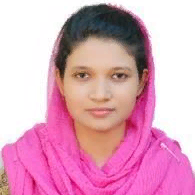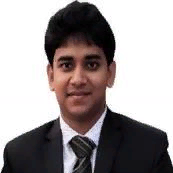International Journal of Mathematical Sciences and Computing (IJMSC)
IJMSC Vol. 8, No. 4, 8 Oct. 2022
Cover page and Table of Contents: PDF (size: 469KB)
Future Possible Age of the Universe with Density Variation
Full Text (PDF, 469KB), PP.72-80
Views: 0 Downloads: 0
Author(s)
Index Terms
Friedmann equation, Radiation domination, Matter domination, Raychaudhuri equation
Abstract
A fundamental principle and assumption of cosmology says that the universe is homogeneous and isotropic when viewed on a large scale. According to the cosmological principle, space might be flat, or have a negative or positive curvature in cosmological model. Positively curved universe denotes the closed universe and negatively curved universe denotes the open universe. Our universe type is flat because it expands in every direction neither curving positively nor negatively. We have observed that the progression of the universe is based on radiation and matter domination. In this paper we also have observed that future possible upper limit age of the universe is 9.4203×〖10〗^10 years which varies with density.
Cite This Paper
Oishi Khanam, Md. Nirab Hossain, Md. Showkat Ali, "Future Possible Age of the Universe with Density Variation", International Journal of Mathematical Sciences and Computing(IJMSC), Vol.8, No.4, pp. 72-80, 2022. DOI: 10.5815/ijmsc.2022.04.07
Reference
[1]Abdel-Rahman, A. M. (1990). A critical density cosmological model with varying gravitational and cosmological “constants”.General Relativity and Gravitation, 22(6), 655-663.
[2]Berry, M. (2017).Principles of cosmology and gravitation. Routledge.
[3]Dodelson, S. (2003). Modern cosmology. Elsevier.
[4]Ellis, G. F. (2006). Issues in the Philosophy of Cosmology. arXiv preprint astroph/ 0602280.
[5]Heidmann, J (1972).The Age of the Universe and its Expansion (review Paper)Age des Etoiles, Proceedings of IAU Colloq. 17, held in Paris, France, 18-22 September, 1972. Edited by G. Cayrel de Strobel and A. M. Delplace. Observatoire de Paris-Meudon, 1972., p.37
[6]Joshi, P. S. (1986). General upper limits to the age of the universe.
[7]Kalligas, D., Wesson, P., and Everitt, C. W. F. (1992). Flat FRW models with variable G and . General Relativity and Gravitation, 24(4), 351-357.
[8]Kim Coble, Kevin McLin, & Lynn Cominsky( 2021). The Friedmann Equation and the Fate of the Universe
[9]Lambourne, R. J. (2010). Relativity, gravitation and cosmology. Cambridge University Press.
[10]Octave, L. (2008). The age of our universe. Hemijska Industrija, 62(5), 313.
[11]Pais, A. (1982). Subtle is the Lord. . . : The Science and Life of Albert Einstein. Clarendon: Oxford.
[12]Schutz, B. (2022). A first course in general relativity. Cambridge university press.
[13]Tappenden, J. (2005). Proof style and understanding in mathematics I: Visualization, unification and axiom choice. In Visualization, explanation and reasoning styles in mathematics (pp. 147-214). Springer, Dordrecht.
[14]Wheeler, J. A. (1990). A journey into gravity and spacetime. Scientific American Library.
[15]Whitrow, G. J. (1954). The age of the universe. The British Journal for the Philosophy of Science, (19), 215-225. [2] Berry, M. (2017).Principles of cosmology and gravitation. Routledge.


